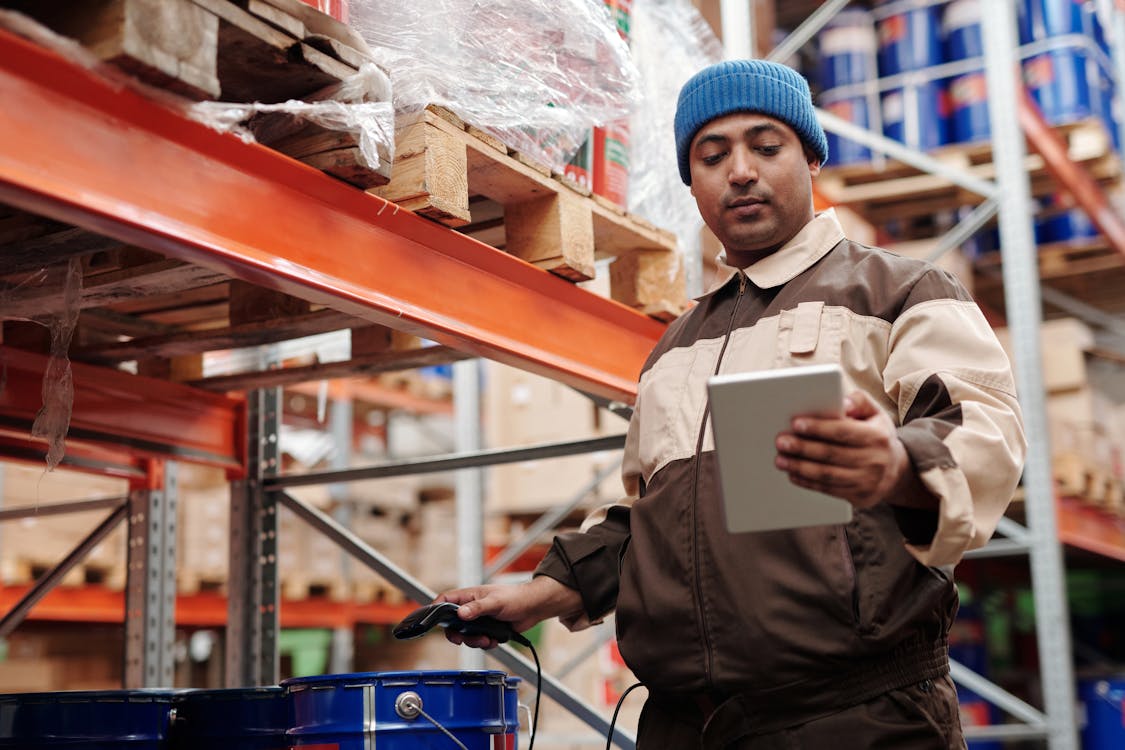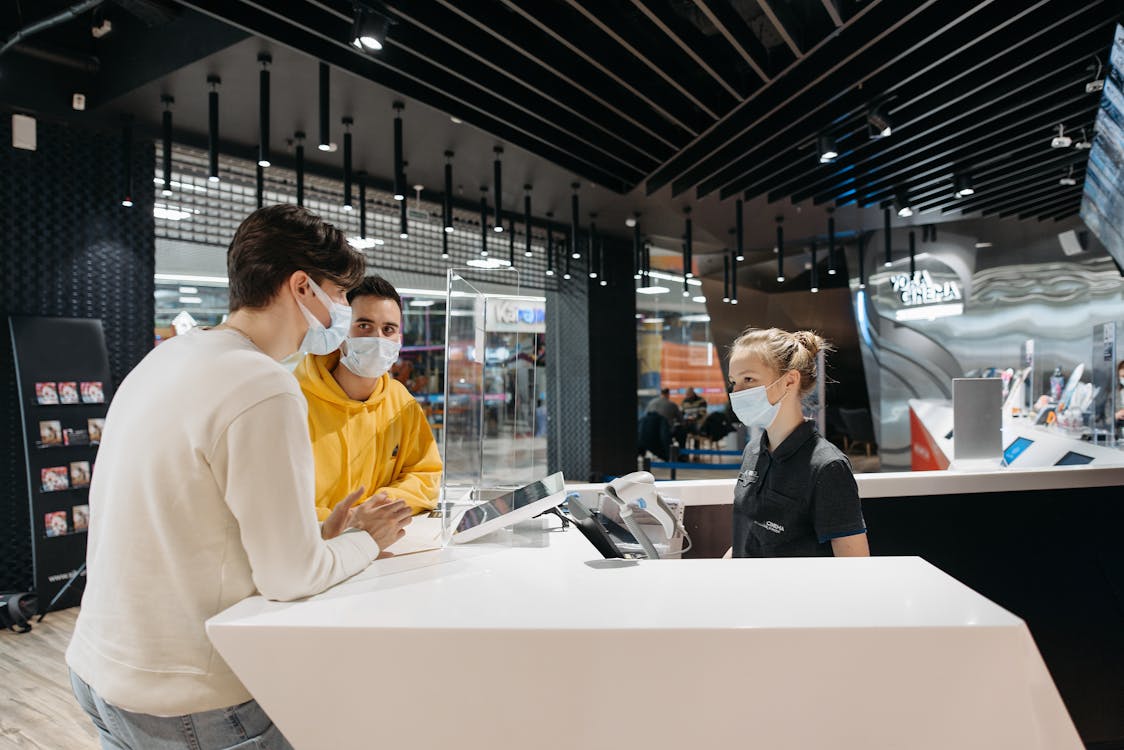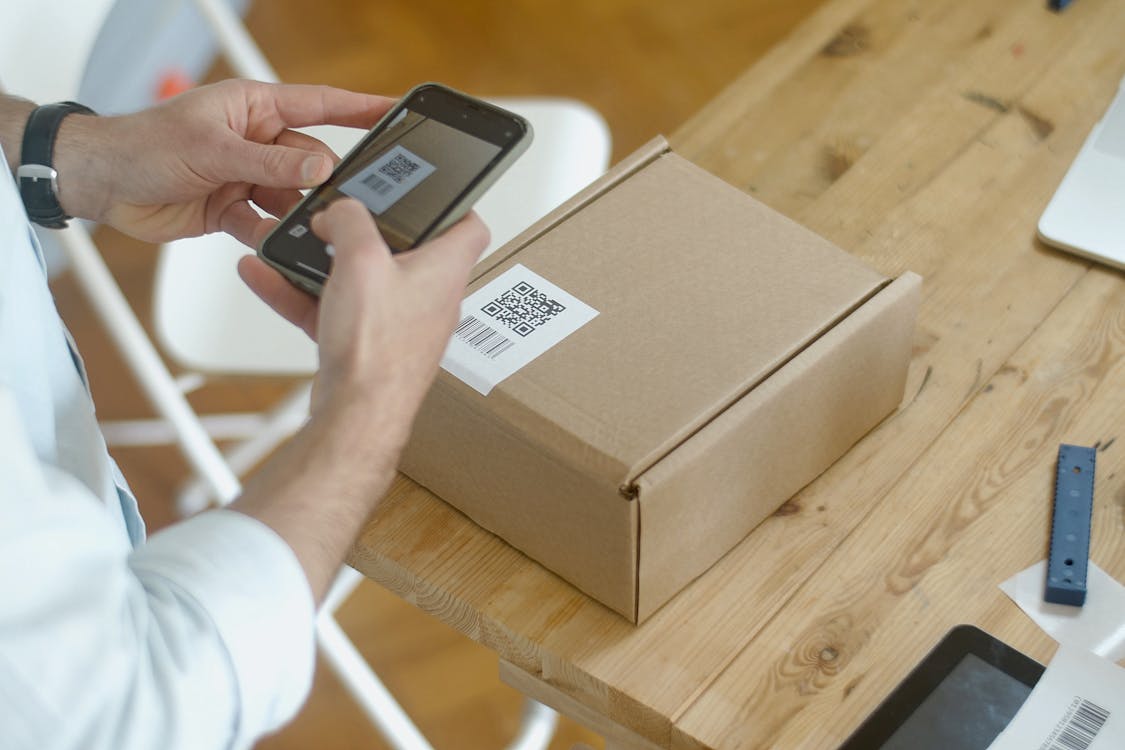From Factory to Shelf: The Journey of a Barcode Label
13th Feb 2025
In the fast-paced world of logistics, retail, and inventory management, barcode labels play an essential role in streamlining processes, ensuring accuracy, and enhancing consumer experiences. However, few pause to think about the lifecycle of a barcode label—how it is created, its journey from the factory to the retail shelf, and its significant role in the everyday transaction process.
This blog explores the often-overlooked journey of a barcode label, from its initial creation at the factory to its impact on end-user experiences at the point of purchase.
The Genesis: Creation of a Barcode Label
Every barcode label has a beginning, and it all starts with a design process. The journey of a barcode label begins at the factory or manufacturer’s site, where products are produced in large quantities. When a product is ready for the market, the manufacturer must decide on a method of identification. This is where the barcode label comes in. Barcode labels are integral to tracking products, ensuring that the correct items are shipped, stocked, and sold.
The Design Process
The design of a barcode label involves several key decisions. The most critical of these is selecting the type of barcode to use. Barcodes come in different formats, such as UPC (Universal Product Code), EAN (European Article Number), and QR codes. Each type has its own use case depending on the industry, the country of sale, and the type of data that needs to be encoded. For example, a UPC is most commonly used in the retail industry, while QR codes are more often found on packaging or advertisements for mobile scanning.
Once the barcode type is selected, the label must be created in terms of size, color, and material. The size of the label must be large enough to be readable by scanners but not so large as to be cumbersome on the product. The material choice is equally important—labels are often made from paper, synthetic materials, or durable plastic, depending on the product and how it will be handled. Labels for perishable goods, for example, may require water-resistant or temperature-resistant materials.
Printing the Label
Once the design has been finalized, the barcode is printed using specialized printers. These printers often use thermal printing technology, where heat is applied to heat-sensitive paper to produce the barcode and other information. In more complex scenarios, labels might be printed with variable data, such as unique serial numbers, batch codes, and expiration dates, which are essential for traceability and ensuring product safety.

The Supply Chain: Barcode Labels in Transit
Once barcode labels are printed and affixed to products, the journey from the factory to the retail shelf begins. This journey involves complex logistical operations, and the barcode plays a crucial role in ensuring everything runs smoothly.
Shipping and Tracking
Barcode labels are vital for tracking products as they move through various stages of the supply chain. They enable manufacturers, distributors, and retailers to keep track of the product’s location, prevent errors, and minimize the chances of misplaced goods. When a product is shipped from the factory, the barcode serves as a reference point. Each time the product enters or leaves a warehouse, its barcode is scanned, providing real-time information on its whereabouts.
The barcode system enables manufacturers and retailers to track inventory levels, forecast demand, and efficiently manage stock. Without barcode labels, the process would be much more error-prone and time-consuming. Barcode scanning ensures that stock is replenished accurately and promptly, reducing the risk of overstocking or stockouts.
Arrival at Distribution Centers
When products reach distribution centers or warehouses, barcodes are scanned to confirm the receipt of goods. This process helps warehouse staff ensure the right quantities are received and that the correct products are on hand for further shipment. Barcodes facilitate automated sorting and storage systems, where products are organized by their barcode identifiers. This means that products are stored in optimized locations, reducing time and labor when products are picked for sale.
At this stage, barcode labels can be scanned again to be put into pallets or cartons that will be sent to specific retail stores. The journey may involve various intermediaries, such as freight carriers, shipping hubs, or regional distributors, but the barcode label remains an essential tool for managing the flow of goods.

At the Retail Shelf: Barcodes in the Store
Once the products arrive at the retail store, barcodes continue to play a pivotal role in inventory management, sales tracking, and customer experience. When products are unloaded from the trucks, the barcode labels are scanned again, entering the store’s inventory system. This step ensures the store's stock system is updated and provides employees with the necessary data to manage stock levels and reorder products when needed.
Stocking the Shelf
In many modern stores, barcodes enable automatic stock updates in real-time. Employees can scan products upon arrival, logging them into the store’s inventory system and ensuring that stock is appropriately distributed across the shelves. Barcode labels enable retailers to maintain accurate shelf counts, ensuring products are replenished as necessary.
Additionally, barcode scanning helps the retailer track how long a product has been on the shelf and whether it’s nearing the end of its shelf life. For products that require timely stock rotation (such as perishable goods), barcode tracking ensures that older stock is used first, minimizing waste and ensuring customers get the freshest products.

End-User Experience: Beyond the Shelf
While barcodes are vital for inventory management, shipping, and retail, their impact extends beyond the transaction. For consumers, barcodes offer a convenient and efficient way to engage with products and services.
Tracking Product Origin
Consumers increasingly want to know more about the products they purchase, including where they come from, how they are made, and whether they are sustainable. With the rise of digital technologies, QR codes printed on product packaging can link directly to online information about the product’s origin. For example, scanning a barcode might bring up a product’s supply chain journey, including where it was sourced and whether it meets ethical production standards.
This transparency helps build consumer trust, giving them the information they need to make informed decisions and fostering a stronger connection to the brand.
Product Returns and Warranty Claims
Barcodes also play an important role in after-sales services like product returns and warranty claims. When a consumer purchases a product, the barcode helps identify the specific item, allowing retailers to easily verify the purchase date, product details, and warranty status. If a product needs to be returned or repaired, the barcode facilitates the process, ensuring customers receive quick and accurate service.

Streamline Your Product Tracking and Inventory Management
Discover affordable color label printers, like the 4x6 thermal label printer or the Epson ColorWorks C4000 label printer, that can elevate your operations. Whether you're looking for a 4x6 shipping label printer or barcode printing solutions, OmegaBrand Sales Corporation offers high-quality, durable options designed for businesses of all sizes. Check out our range of barcode printers for sale.

